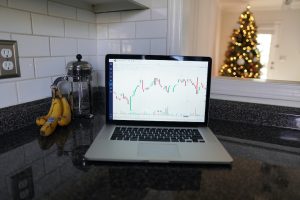Forex trading involves buying and selling currencies with the goal of making a profit. One of the tools that traders use to enhance their trading potential is leverage. Leverage is a powerful tool that allows traders to control large positions with a small amount of capital. In this article, we will explain how to calculate leverage in forex trading.
What is leverage?
Leverage is a financial tool that allows traders to increase their buying power in the market. Essentially, leverage means borrowing money from a broker to open a larger position than what a trader could afford on their own. The amount of leverage a trader can use depends on the broker and the account type. In forex trading, leverage is usually expressed as a ratio, such as 1:50 or 1:100.
How does leverage work?
Leverage allows traders to control a large position with a relatively small amount of capital. For example, if a trader wants to buy $100,000 worth of EUR/USD but only has $1,000 in their trading account, they could use leverage to open the position. If the broker offers a leverage of 1:100, the trader could open the position with only $1,000 and control a position worth $100,000.
Leverage can amplify both profits and losses. If the trade is successful, the profits will be multiplied by the leverage ratio. However, if the trade goes against the trader, the losses will also be multiplied by the same ratio. Therefore, it is important to use leverage carefully and to manage risk effectively.
How to calculate leverage?
To calculate leverage, traders need to know the size of their trading position and the amount of margin required by the broker. Margin is the amount of money that a trader needs to deposit with the broker to open and maintain a position.
The formula for calculating leverage is:
Leverage = Position size / Margin
For example, if a trader wants to open a position of $100,000 in EUR/USD and the broker requires a margin of 2%, the calculation would be:
Leverage = $100,000 / (2% x $100,000) = 1:50
This means that the trader can control a position of $100,000 with only $2,000 in their trading account. The leverage ratio is 1:50.
It is important to note that different brokers may have different margin requirements and leverage ratios. Traders should always check the terms and conditions of their broker before trading with leverage.
Managing leverage risk
Leverage can be a powerful tool in forex trading, but it can also lead to significant losses if not managed properly. Therefore, it is important to use leverage wisely and to manage risk effectively.
One way to manage leverage risk is to use stop-loss orders. A stop-loss order is an instruction to close a position at a certain price level to limit losses. Traders can use stop-loss orders to control their losses and to prevent their account from being wiped out by a single trade.
Another way to manage leverage risk is to use proper position sizing. Traders should only risk a small percentage of their trading account on each trade, typically no more than 2%. This means that if a trader has a $10,000 trading account, they should only risk $200 on each trade.
Conclusion
Leverage is a powerful tool that allows traders to control large positions with a small amount of capital. However, it is important to use leverage carefully and to manage risk effectively. Traders should always check the terms and conditions of their broker before trading with leverage and should use stop-loss orders and proper position sizing to manage leverage risk. By understanding how to calculate leverage in forex trading, traders can make informed decisions and enhance their trading potential.





